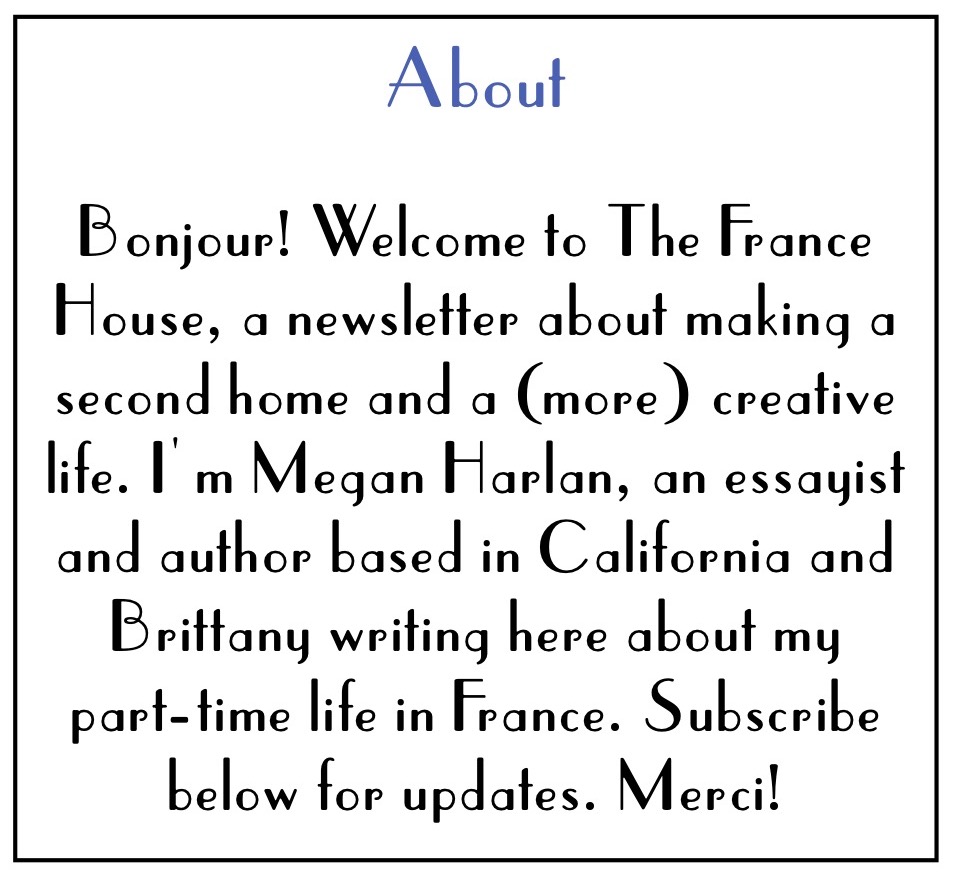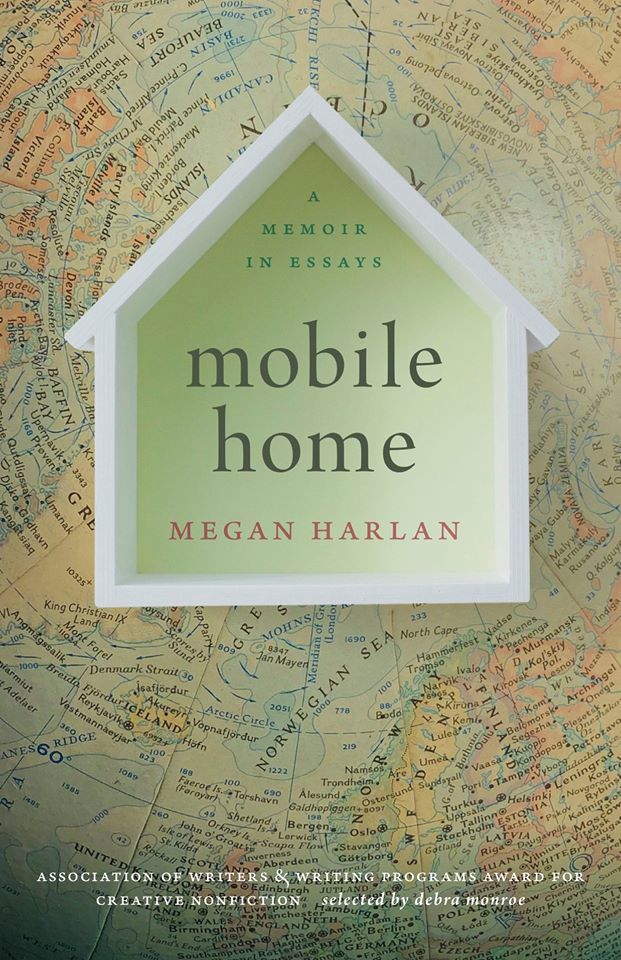On discovering Dinan and the pleasures of a walled medieval French city.
By Megan Harlan
France does “town” extremely well. Though visitors often head to Paris and nowhere else, every region is packed with drop-dead gorgeous towns and small cities—villes—each with a unique claim to cultural and historical relevance: Tours was once the capital of France; Avignon the seat of Popes; Pau the headquarters of Eleanor of Aquitaine; and on and on. Even if you’re not a history person—and my condolences if you’re not—you still reap the benefits in these places’ diverting antique architectures, layouts, and all manner of artistic jewels and artisanal heritages tucked into churches and castles, museums and galleries, cloisters and plazas. Where royals and bishops once tread, really nice lunch terraces remain.
Though I’m up for stuff, travel-wise, finding a secondary hometown was naturally a far more intense experience than planning the next trip, drawing from deep, personal senses of discernment and investment. My view of the place would become both panoramic in a Geography Class sort of way (what’s the deal with the French economy, anyway?) and very precisely particular to us (will streets that old smell right?). Because I’m married, this town had to match my partner’s desires as well; because I’m a mother, I wanted our son to love it, learn from it, and feel just as much a part of it as we—hopefully—would.
But it all started with what the French call a coup-de-coeur—a heart-grazing love-at-first-sight.

view of Dinan’s medieval wall from the rose garden just outside it

over the centuries, houses have been built along the medieval wall
On our fateful vacation to Dinan in August 2019, we drove our rental car into the dense, cobble-stoned heart of town, disoriented after having gotten lost on winding roads through the countryside of northeastern Brittany (off major roads in Europe, a certain map app that rhymes with “snoogle” will sometimes lead you so spectacularly astray, you may be better off picking turns at random). We’d chosen Dinan because it looked like a good base for visiting other sites in northern Brittany and neighboring Normandy: Mont-Saint-Michel, the extraordinary island city; Saint-Malo, the walled coastal town and longtime pirate haunt; Bayeux for the tapestry; a Normandy beach or two.
I’d also read that Dinan counts as one of France’s best preserved medieval walled cities; that sounded impressive. But I didn’t really understand what this meant until we saw it: how Dinan’s hulking castle, ten towers, and numerous ramparts and arched stone gates are seamlessly incorporated into the wall’s two-mile-long structure and soaring face; how this wall sits like a crown atop a high granite hill, ringing the ancient city center; and how this hilltop-and-wall combo offers myriad elevations throughout the town—and so different captivating views nearly everywhere you turn.

view of the medieval wall from Dinan’s castle, city center to the right

arched castle gate, with steps leading to the center
While all of this makes Dinan a walker’s paradise, it is equally a driver’s nightmare. We parked in a central garage, dropped our bags in our AirBnB, and headed out, relieved and a little giddy to be free of our car.
I prefer to live in places that drivers hate. My nearly-a-decade in Manhattan taught me this, as well as the insight that no matter how big the city in which you ostensibly live, you will naturally hew to your own neighborhood, revisiting your favorite haunts as if you lived in a far smaller town. As we wandered Dinan in the coming days, its size and population—about 11,000 residents—felt large enough to contain more than enough variety of restaurants, shops, parks, boutiques, and other urban offerings for full-time living. In fact, the walkable scale of its compact warren of picturesque old streets reminded me, just a little, of the West Village I’d called home for many years.
Dinan contains two distinct parts: The upper town, ringed by the medieval wall, and the lower town—the river port. Connecting these two areas is a famous pedestrian road, the steep and cobble-stoned Rue du Jerzual, that transforms (in name only) into the Rue du Petit Fort once you pass outside the medieval gate. The entire road runs about a third of a mile, much of it at San Francisco-style grades. It can take forever to traverse, mainly because it’s lined with so many unique art galleries and artisan shops—specializing in linen, jewelry, glass, leather, paintings, sculpture, porcelain figurines, handmade toys, midcentury modern houseware, vintage record albums, and so on. Between window-shopping and ogling the incredible array of medieval and Renaissance houses that line it, you tend to slowly zigzag your way up or down its long, narrow stretch.
Down at the port, the River Rance runs alongside Dinan, leading to a canal network traversing all of Brittany—and to Saint-Malo and the English Channel about 20 miles north. Like all of Europe’s major rivers, it was a superhighway in the Middle Ages, hosting fleets of trading ships and barges. Today the port is lined with seafood restaurants specializing in the region’s famous local catches, scallops and oysters—which, as it happens, are my and my partner’s favorite seafoods, another “good sign” we’d remember later.

Dinan’s port in the evening, the viaduct and medieval wall lit up
The truth is, my only required urban creature comforts are good bookstores and bakeries. I don’t always suss out bookstores when I travel, but three in Dinan drew me to them right away: a clean, well-lighted chain outfit with a wide selection; a charmingly rambling used book store near the Clock Tower; and an incredible antiquarian shop where half the stock seemed suitable for a museum. And my son, partner, and I sampled bakery after bakery, becoming loyal to two in the upper town, one in the lower. We’d leave in the morning to see another UNESCO World Heritage site via our car, and find ourselves yearning to return “home” to Dinan—always with a bakery stop.
Speaking of UNESCO: Though Dinan is filled with intriguing historical sites, its fame among French and Western European travelers (in particular) is somewhat remarkable, given that it lacks a major landmark for which it’s famous, a singular cathedral, castle, or museum exerting an inexorable gravitational force that shapes local culture—and tourism. Instead, as we chatted with locals—whether crêperie hosts, high-end jewelers, or gift shop owners—they kept mentioning the town’s most noticeable quality: How Dinan offers such a “good quality of life.”
More on this simple yet profound concept in the next piece. But long after we left Dinan, that term rang in my head—and the reminder that a “good quality of life” in a place only counts as such if it is widely accessible to and shared by the people who live there.

[Header photo credit: Benh Lieu Song, with Creative Commons attribution linked here. All other photos credited to the author.]









